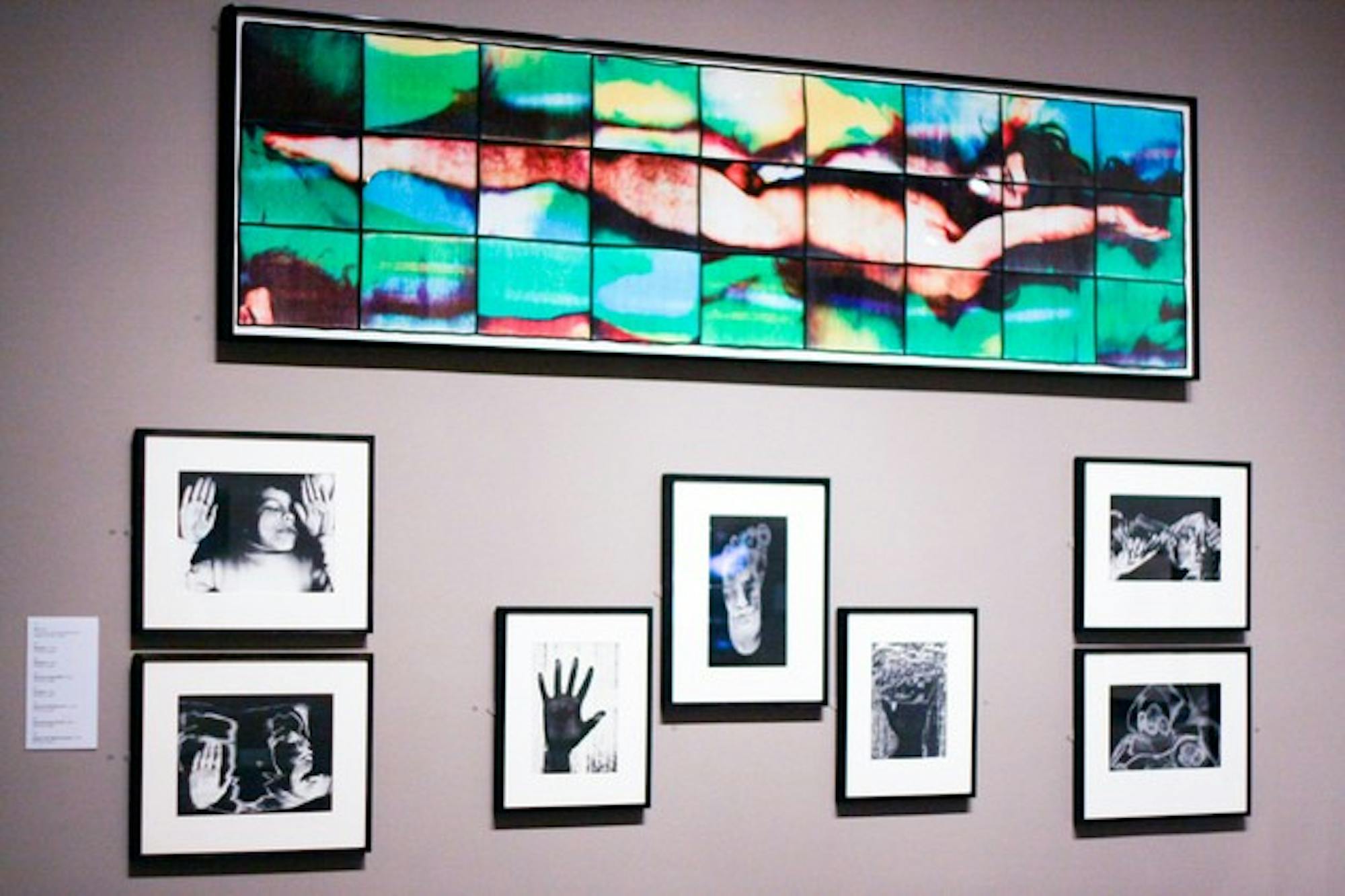University of Michigan art history professor emerita Diane Kirkpatrick praised Sheridan's vision in a lecture on Friday at the Hood.
"The exhibit gives you something of the quality of this woman who, throughout her lifetime, from the time she was a child, seems to have embodied and has embodied an extraordinary energy," Kirkpatrick said. "Energy which gave her a thirst for knowledge about the world around her, the universe, a search for tools to express that."
Sheridan developed her unusual artistic methods in the 1960s, when she designed and distributed posters for the 1968 Democratic Convention. Frustrated by the time it took to generate serial images, Sheridan began experimenting with then-new Xerox photocopy technology and, later, the new 3M Thermo-Fax. In 1970 she became the artist-in-residence at 3M.
Sheridan's art draws from the principles of science and technology to demonstrate such themes as the passage and shape of time, Kirkpatrick said.
"She's actually working with the machine in a collaborative way," Katherine Hart, associate director of the Hood and curator of the exhibit, said. "The machine is her collaborator She's a wonderful example of a pioneer artist, and also a woman artist at a time where there were not that many women artists getting recognition."
In 2002, Sheridan donated over 600 of her works to the Hood's permanent collection. This exhibition marks Sheridan's first solo exhibit.
Kirkpatrick, a close friend of Sheridan's, said that it is rare for a museum or gallery to have such a large collection from one artist. The Hood is displaying over 80 of her works in 31 different media.
Encompassing the many sides of Sheridan's artistic inspiration, the exhibition categorizes the works into thematic groups, including "Generating Energy," "Envisioning Life," "Sensing Opposites" and "Experimenting with Light."
"What I really wanted to focus on here was bringing together images that show her subject matter, and also show the strength of the imagery, how compelling these images are," Hart said.
The exhibit is a smartly organized, tastefully hung and visually appealing. Sheridan's works fill the two rooms of the Churchill Lathrop Gallery with an array of color. The first of two rooms displays Sheridan's use of varied media, including graphite, ink, colored pencil, lithograph, acrylic paint, cont crayon and felt-tip pen. Video clips of Sheridan working with different media and machines play in a loop to give the viewer a sense of the artist's creative process.
"I wanted to focus on her as an artist, as a creator of images. As an art museum, that's one of things you want to do, is bring out a grouping of objects that show off different aspects of her career, in a way in which you have a sense of her: who she is as an artist, her identity," Hart said.




